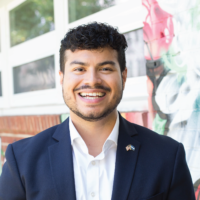January 30, 2020
Virginia is Ready for a Paid Family & Medical Leave Program
A statewide paid family and medical leave program would allow more working people in Virginia the opportunity to take time off to care – time to care for themselves, a loved one, or a new addition to the family. Currently, many families with low incomes cannot afford to take advantage of the national Family and Medical Leave Act (FMLA) which only applies to 60% of workers and provides 12 weeks of time off with no guarantee of any pay. For a family living paycheck to paycheck this is simply not an option.
The ability to take paid time off to care is important for everyone. But for communities of color, this opportunity is largely unavailable – only 25% of Latinx working people and 43% of Black working people in the United States report having access to some form of paid parental leave, compared to 50% of white working people. Access to a comprehensive statewide paid family and medical leave program would eliminate the guesswork about a given worker’s benefits and allow more small employers to provide long-term paid leave.
A recent report by Main Street Alliance – an organization that focuses on uplifting the voices of small business owners – outlines not only the benefits of a paid family and medical leave program to small businesses but also the potential savings to employers. This shows that this policy has benefits for both employers and employees.
A bill in the House (HB 825, Del. Carroll Foy) and one in the Senate (SB 770, Sens. Boysko and Hashmi) would implement a 12-week paid leave program for all working people who meet the monetary minimums to qualify for state unemployment benefits, which is about 83% of Virginia’s civilian workforce. The proposals would be funded through employer and employee contributions and would allow individuals to earn up to 80% of their weekly wages, not to exceed 80% of the average statewide weekly wage. These proposals would allow more families with low incomes to take the necessary time off to care without having to worry about how their basic needs would be met.

The estimated contribution rate for both employers and employees is estimated to be just 0.39% of earnings each for the first year, and all contributions will be held in a newly created “Family and Medical Leave Insurance Fund.” For example, an individual earning $30,000 a year, the employer and employee would each contribute roughly $2.25 a week. For an individual earning $50,000 a week the employer and employee would each contribute $3.76 a week. This represents a relatively small investment for a large safety net.
The only ongoing impact this program would have on the state’s general fund resources are the contributions the state would make as an employer. While start-up costs would require an initial loan from the general fund, it would be paid back within two years by the newly created insurance fund. Ongoing administrative costs would also be covered by the insurance fund. After two years, the state would only need to contribute money as an employer, which is an estimated $62.5 million from the state general fund in the first year of contributions.
Virginia should strongly consider becoming the ninth state to implement a comprehensive paid family and medical leave program and pass HB 825 and SB 770. Many people, regardless of occupation or background, will need to take time off to care at some point in their lives. Making sure families can do so, without fear of losing their job or income, is a crucial step to making Virginia a better place to work.
Category:
Economic Opportunity
